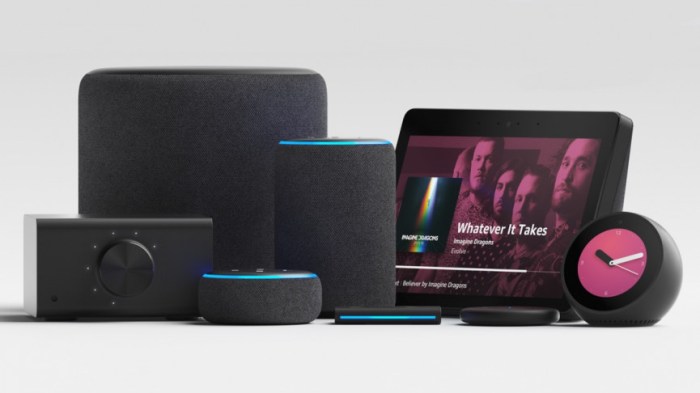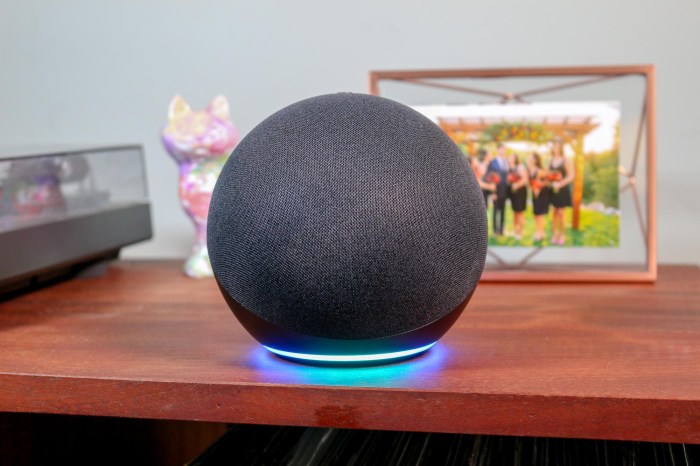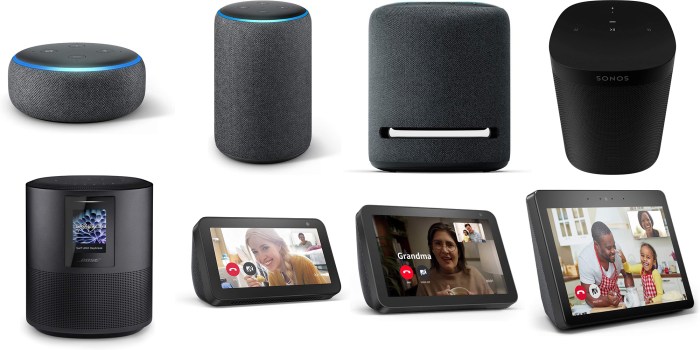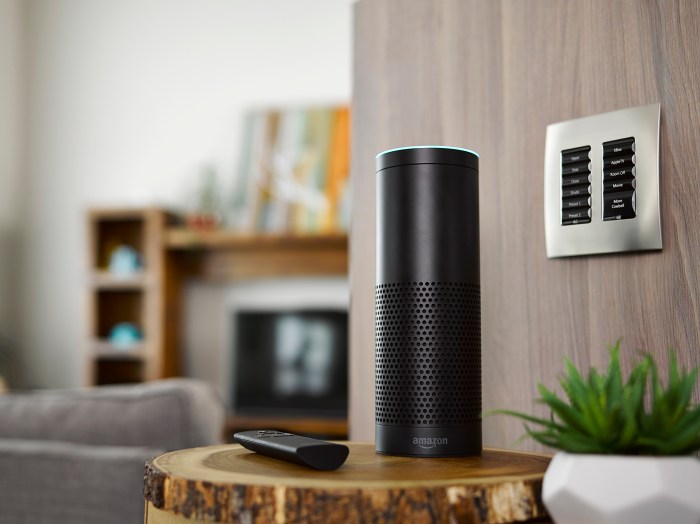In the realm of smart home technology, Alexa stands as a prominent name, offering a seamless and voice-controlled experience. As you embark on the journey of integrating Alexa into your home, it’s essential to consider the financial implications. This comprehensive guide delves into the costs associated with Alexa smart home systems, providing insights into initial investments, device variations, cost-saving strategies, and long-term considerations.
From the outset, we’ll dissect the initial costs of setting up an Alexa smart home system, encompassing compatible devices, installation fees, and additional expenses. We’ll then explore the diverse types of Alexa-compatible smart home devices, presenting their price ranges and examining factors that influence cost variations.
Initial Cost of Alexa Smart Home System

Setting up an Alexa smart home system involves several initial costs, including the purchase of compatible devices, installation fees, and additional expenses for setup and configuration. Understanding these costs is essential for budgeting and planning a successful smart home implementation.
Cost of Compatible Devices
The primary expense associated with setting up an Alexa smart home system is the purchase of compatible devices. These devices can include smart speakers, smart lights, smart thermostats, smart plugs, and various other IoT (Internet of Things) devices. The cost of these devices can vary widely depending on the brand, features, and capabilities.
For instance, a basic smart speaker may cost around $50, while a high-end model with advanced features can cost upwards of $200. Similarly, smart lights can range from $10 to $50 per bulb, and smart thermostats can cost between $100 and $300.
Types of Devices and Their Costs
The diversity of Alexa-compatible smart home devices offers a wide range of options to cater to various needs and budgets. Prices can vary significantly depending on factors like brand, features, and functionality. This table provides an overview of different device categories and their typical price ranges:
| Device Category | Price Range |
|---|---|
| Smart Speakers | $20
|
| Smart Lights | $10
|
| Smart Plugs | $10
|
| Smart Thermostats | $50
|
| Smart Door Locks | $100
|
| Smart Security Cameras | $50
|
| Smart Home Hubs | $50
|
Within each category, the cost variations can be attributed to factors such as brand recognition, additional features (e.g., motion detection, night vision), connectivity options (e.g., Wi-Fi, Bluetooth), and compatibility with other smart home platforms.
Factors Influencing Cost Variations
- Brand: Established brands often command a premium price due to their reputation, reliability, and customer support.
- Features: Devices with more advanced features, such as higher resolution cameras, wider viewing angles, or integration with other smart home systems, tend to be more expensive.
- Functionality: Devices that offer a wider range of functions, such as smart speakers with built-in displays or smart thermostats with geofencing capabilities, generally carry a higher price tag.
Cost-Saving Strategies
Minimizing the overall cost of an Alexa smart home system is feasible with thoughtful planning and strategic choices. Several approaches can help you save money while still enjoying the benefits of a smart home.
One effective strategy is to start small and gradually expand your system over time. Prioritize essential devices like smart speakers, lighting, and thermostats, and add more devices as your budget allows.
Choose Cost-Effective Alternatives
There are numerous cost-effective alternatives to expensive smart home devices. Research and compare prices from different brands and retailers to find the best deals. Consider purchasing refurbished or used devices, which often offer significant savings.
DIY Projects for Integrating Existing Devices
If you’re handy, you can integrate existing devices into your Alexa smart home system through DIY projects. For instance, you can build your own smart switches or modify existing ones to work with Alexa. This approach can save you a substantial amount of money compared to buying new smart devices.
Take Advantage of Sales and Promotions
Keep an eye out for sales and promotions offered by retailers and manufacturers. Many companies offer discounts, rebates, and special deals on smart home devices throughout the year. Take advantage of these opportunities to save money on your purchases.
Consider Bundling Devices
Purchasing smart home devices in bundles can often save you money compared to buying them individually. Many retailers offer bundles that include multiple devices at a discounted price.
Use Open-Source Software and Platforms
Open-source software and platforms like Home Assistant and OpenHAB provide a cost-effective way to control and integrate smart home devices. These platforms allow you to connect various devices from different brands and manufacturers, reducing the need to purchase expensive proprietary systems.
Long-Term Costs and Maintenance

While Alexa smart home systems offer convenience and automation, they also involve ongoing costs and maintenance requirements. Understanding these long-term expenses can help you make informed decisions about your smart home investment.
Electricity Consumption
- Alexa-enabled devices, such as smart speakers, thermostats, and lighting, consume electricity. The amount of energy consumed depends on the specific devices and their usage patterns.
- Energy-efficient devices can minimize electricity consumption, leading to lower utility bills.
Subscription Fees
- Certain Alexa-compatible services, such as music streaming or security monitoring, may require subscription fees.
- These fees can vary depending on the service provider and the features included.
Device Replacements and Upgrades
- Like any electronic devices, Alexa-enabled devices may require replacements or upgrades over time due to wear and tear or technological advancements.
- The frequency of replacements or upgrades depends on the quality of the devices and the pace of technological changes.
Maintenance and Troubleshooting
- Maintaining an Alexa smart home system involves regular updates, software patches, and occasional troubleshooting.
- While most updates and troubleshooting can be done by the user, some complex issues may require professional assistance, which can incur additional costs.
Comparison with Other Smart Home Systems

Understanding the cost differences between Alexa and other popular smart home systems can help you make an informed decision based on your budget and needs.
Initial Setup Costs
The initial setup cost of a smart home system includes the cost of the hub, sensors, and other devices. Alexa typically requires an Amazon Echo device as the hub, while other systems may use a dedicated hub or rely on a smartphone app.
The cost of the hub can range from $50 to $200, depending on the brand and features. Sensors and other devices can range from $20 to $100 each.
Device Compatibility
Alexa has a wide range of compatible devices, including smart lights, thermostats, door locks, and security cameras. Other systems may have a more limited selection of compatible devices. It’s important to consider the devices you want to integrate with your smart home system before making a purchase.
Ongoing Expenses
Some smart home systems require a monthly subscription fee for access to certain features or cloud storage. Alexa does not have a monthly subscription fee, but some of the skills and services offered by third-party developers may require a subscription.
Other systems may charge a monthly fee for features such as remote access, video storage, or professional monitoring.
Cost-Saving Strategies
There are several ways to save money on a smart home system. Consider purchasing a starter kit, which typically includes a hub and a few basic devices at a discounted price. Look for sales and discounts on smart home devices.
Consider purchasing refurbished or used devices.
Cost-Benefit Analysis
An Alexa smart home system offers various conveniences and benefits that can potentially outweigh its initial and ongoing costs. Let’s explore how this system can enhance comfort, security, and energy efficiency, and quantify these benefits in monetary terms.
Comfort and Convenience
- Voice control and automation: Alexa allows hands-free control of devices, enhancing comfort and convenience. Smart thermostats, lights, and appliances can be operated remotely, saving time and effort.
- Personalized routines: Alexa can be programmed to perform specific tasks based on user preferences. For instance, it can turn on lights, adjust the thermostat, and play music when you enter a room.
- Entertainment and information: Alexa provides access to a wide range of entertainment options, including music, podcasts, and audiobooks. It can also provide information on weather, news, and sports.
Security and Safety
- Motion sensors and cameras: Alexa-compatible motion sensors and cameras can detect movement and send alerts to the user’s smartphone. This enhances home security and allows for remote monitoring.
- Smart locks: Alexa-enabled smart locks allow users to lock and unlock doors remotely, granting access to authorized individuals. They also provide a record of who entered and exited the home.
- Emergency response: Alexa can be programmed to call emergency services in case of accidents or medical emergencies. This can provide peace of mind and potentially save lives.
Energy Efficiency
- Smart thermostats: Alexa-compatible smart thermostats can learn user preferences and adjust the temperature accordingly, saving energy and reducing utility bills.
- Smart lights: Alexa-enabled smart lights can be programmed to turn off automatically when not in use, reducing energy consumption.
- Energy monitoring: Alexa can be integrated with energy monitoring devices to track energy usage and identify areas where savings can be made.
Quantifying the benefits of an Alexa smart home system in monetary terms can vary depending on individual usage patterns and energy costs. However, studies have shown that smart home systems can lead to significant savings on energy bills, ranging from 10% to 30%. Additionally, the convenience and security features can provide peace of mind and enhance the overall quality of life.
Case Studies and Real-Life Examples

Exploring real-life experiences with Alexa smart home systems can provide valuable insights into their practicality, cost-effectiveness, and the challenges faced by users. Here are some case studies and examples that shed light on the implementation and outcomes of Alexa-powered smart homes.
Alexa smart home systems have gained popularity due to their convenience, automation capabilities, and integration with various smart devices. However, understanding the real-life experiences of individuals who have implemented these systems can provide a more comprehensive perspective on their benefits, challenges, and overall cost-effectiveness.
A Family’s Smart Home Transformation
The Smiths, a family of four living in a suburban home, decided to embrace smart technology to enhance their daily lives. They invested in an Alexa-powered smart home system, including smart lights, thermostats, security cameras, and voice-activated assistants. The system allowed them to control their home’s lighting, temperature, and security remotely, as well as access information and entertainment through voice commands.
The Smiths experienced significant improvements in convenience and energy efficiency. They could adjust the thermostat from their smartphones while away from home, ensuring a comfortable temperature upon their return. The smart lights enabled them to set schedules and create ambiance with voice commands, enhancing their daily routines.
The security cameras provided peace of mind, allowing them to monitor their home remotely.
However, the Smiths also faced challenges during the setup and integration process. Some devices required specific configurations, and they had to troubleshoot connectivity issues initially. Additionally, the family had to adjust to using voice commands and learning the system’s capabilities.
Over time, they became more proficient and comfortable with the technology.
Overall, the Smiths found their Alexa smart home system to be a worthwhile investment. The convenience, energy savings, and enhanced security outweighed the initial challenges and learning curve. They appreciated the ability to control their home with voice commands and automate tasks, making their lives easier and more enjoyable.
Future Trends and Cost Projections
As the smart home industry continues to evolve, several emerging trends and advancements are expected to influence the cost of Alexa smart home systems in the future.
Increasing Affordability and Accessibility
One notable trend is the increasing affordability and accessibility of smart home devices. As technology advances, the cost of production for these devices is expected to decrease, making them more affordable for a wider range of consumers. Additionally, the growing popularity of smart home systems is attracting more manufacturers, leading to increased competition and potentially lower prices.
Integration with Renewable Energy Sources
Another trend is the integration of smart home systems with renewable energy sources, such as solar panels and wind turbines. This integration allows homeowners to optimize their energy consumption and reduce their reliance on traditional energy sources. By leveraging smart devices to monitor and control energy usage, homeowners can potentially save money on their energy bills.
Enhanced Security Features
The demand for enhanced security features in smart home systems is also rising. As smart homes become more connected and sophisticated, homeowners are increasingly concerned about the potential for cyberattacks and security breaches. Manufacturers are responding to this demand by developing more advanced security features, such as biometric authentication, facial recognition, and improved encryption.
While these features may initially add to the cost of a smart home system, they can provide significant long-term benefits in terms of security and peace of mind.
Continued Innovation and New Technologies
The smart home industry is characterized by continuous innovation and the emergence of new technologies. These advancements, such as artificial intelligence (AI), machine learning (ML), and the Internet of Things (IoT), are expected to further enhance the capabilities and functionality of smart home systems.
While these innovations may initially come with a higher cost, they can potentially lead to long-term cost savings through increased efficiency, automation, and convenience.
Final Summary

In conclusion, the decision to adopt an Alexa smart home system is a multifaceted one, influenced by a multitude of factors. We’ve endeavored to provide a comprehensive analysis of the costs and benefits associated with these systems, empowering you to make informed choices that align with your budget and smart home aspirations.
Ultimately, the true value of an Alexa smart home system lies in its ability to enhance your daily life, offering convenience, comfort, and peace of mind.
Questions and Answers
Q: What are some cost-saving strategies for implementing an Alexa smart home system?
A: Consider cost-effective alternatives to expensive devices, explore DIY projects for integrating existing devices, and keep an eye out for sales and promotions.
Q: What are the potential ongoing costs associated with maintaining an Alexa smart home system?
A: Ongoing costs may include electricity consumption, subscription fees for certain services, and the need for device replacements or upgrades over time.
Q: How does the cost of an Alexa smart home system compare to other popular smart home systems?
A: The cost of an Alexa smart home system is generally comparable to other popular systems, but specific costs may vary depending on the devices and features you choose.
Q: What are some emerging trends and advancements that may impact the cost of Alexa smart home systems in the future?
A: Emerging trends include the integration of artificial intelligence and machine learning, increased device compatibility, and the potential for reduced costs due to technological advancements.